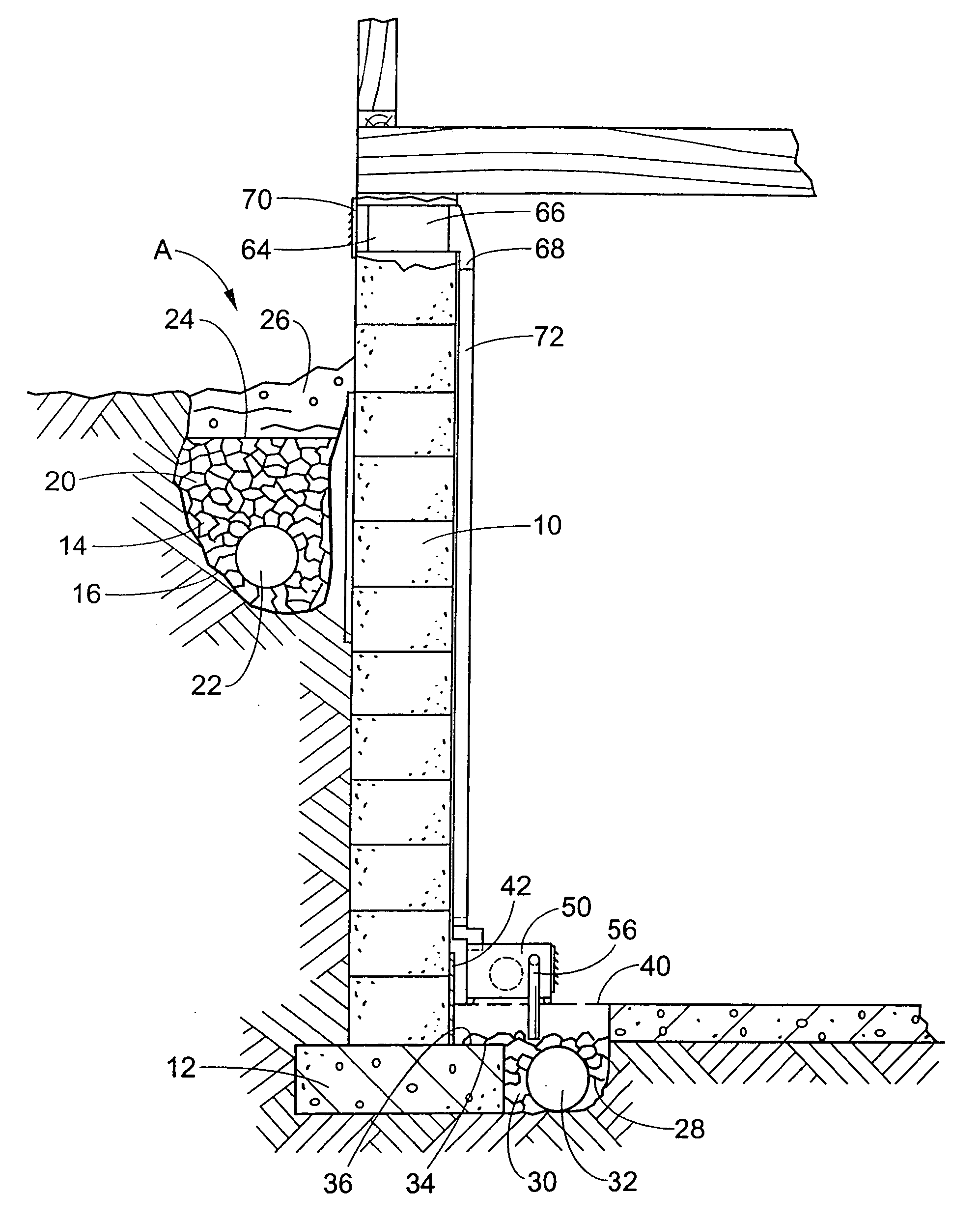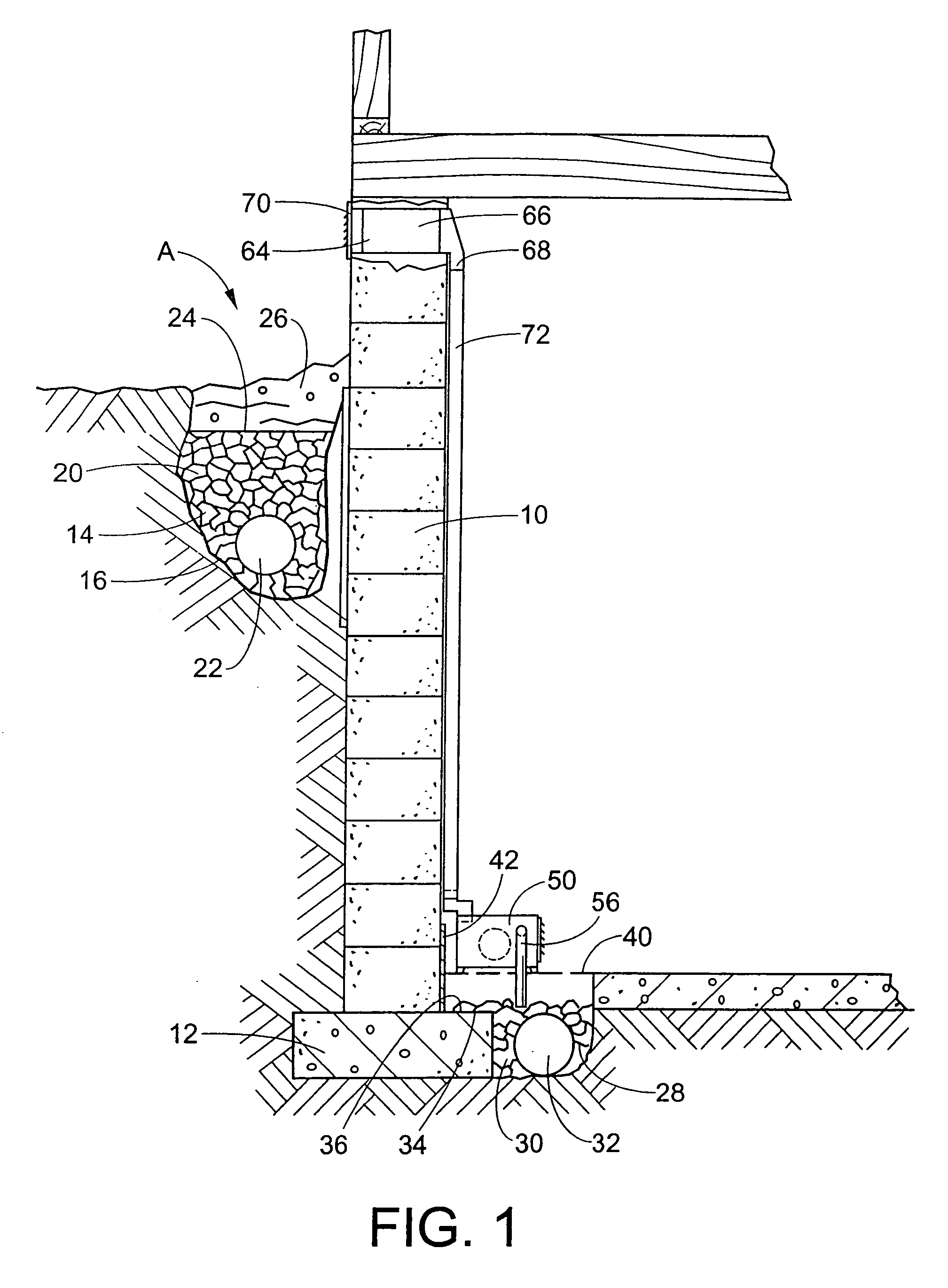Waterproofing and humidity control system
a technology for controlling system and humidity, which is applied in ventilation system, building repair, heating type, etc., can solve problems such as water seepage into buildings, plague the construction industry, and plague the below-ground foundation wall of buildings, so as to reduce the level of humidity and minimize the effect of water seepag
- Summary
- Abstract
- Description
- Claims
- Application Information
AI Technical Summary
Benefits of technology
Problems solved by technology
Method used
Image
Examples
third embodiment
[0035]The fan of the fan and motor housing can be rated at about 177 cubic feet per minute (cfm) and have a noise level of about 48 decibels (db). In other words, a very quiet fan is used so as not to disturb occupants in the building. According to another embodiment, the fan can have a variable speed in order to have an output of anywhere from 100 to 300 cfm. The speed would be controlled by a speed selector knob (not illustrated). In yet a third embodiment, the fan speed can be varied anywhere from 0 to 250 cfm. The fan speed may need to be varied depending upon the amount of square feet in the basement. It is anticipated that at around 150 to 200 cfm, the system of the present invention can handle approximately 1300 square feet of basement floor surface, that is a basement of about 35 feet by 35 feet. The cfm rating is to ensure an enhanced airflow from the basement. The fan is typically of a conventional cage and barrel design.
[0036]Referring now to FIG. 2, the motor and fan hou...
second embodiment
[0041]The duct is typically no more than 13.5 inches wide. The thickness of the duct typically ranges from 2½–3 inches maximum. In FIGS. 1A and 4, the duct comprises a first portion 78 and second portion 80. The first portion 78 has a larger outer dimension than the outer dimension of the second portion. The second portion is thus slidably received in an opening 82 of the first portion adjacent a flange 84. The second portion 80 is thus adjustable in relation to the first portion to accommodate different basement heights. The height of the duct can range from 60 inches to about 102 inches by simply sliding the second portion with respect to the first portion.
[0042]Referring now to FIGS. 2 and 3, an adapter conduit 100 can be provided between the motor and fan housing and the third conduit or duct 72. The adapter conduit is used in a situation where the humidity control system is installed in a home with a finished basement wall. The adapter conduit has a first portion 102 and a seco...
PUM
 Login to View More
Login to View More Abstract
Description
Claims
Application Information
 Login to View More
Login to View More - R&D
- Intellectual Property
- Life Sciences
- Materials
- Tech Scout
- Unparalleled Data Quality
- Higher Quality Content
- 60% Fewer Hallucinations
Browse by: Latest US Patents, China's latest patents, Technical Efficacy Thesaurus, Application Domain, Technology Topic, Popular Technical Reports.
© 2025 PatSnap. All rights reserved.Legal|Privacy policy|Modern Slavery Act Transparency Statement|Sitemap|About US| Contact US: help@patsnap.com



